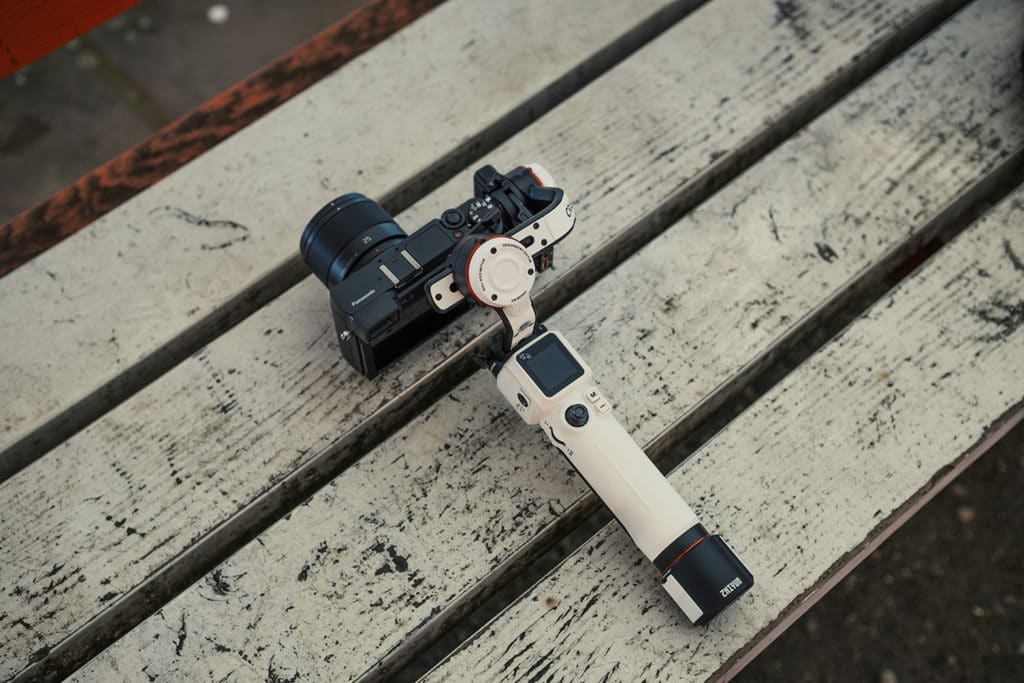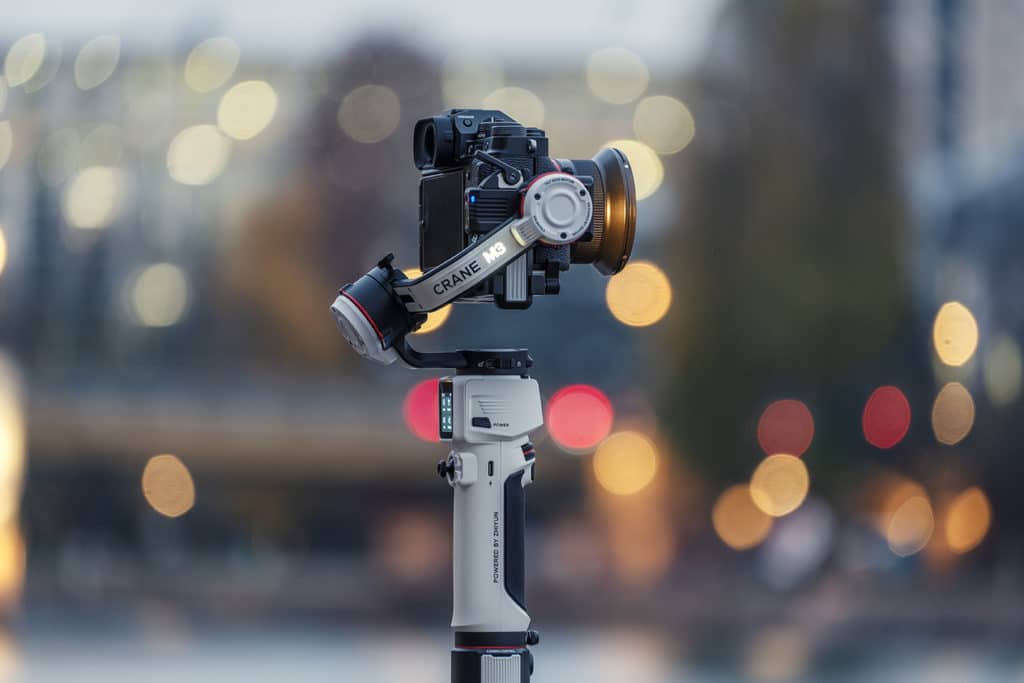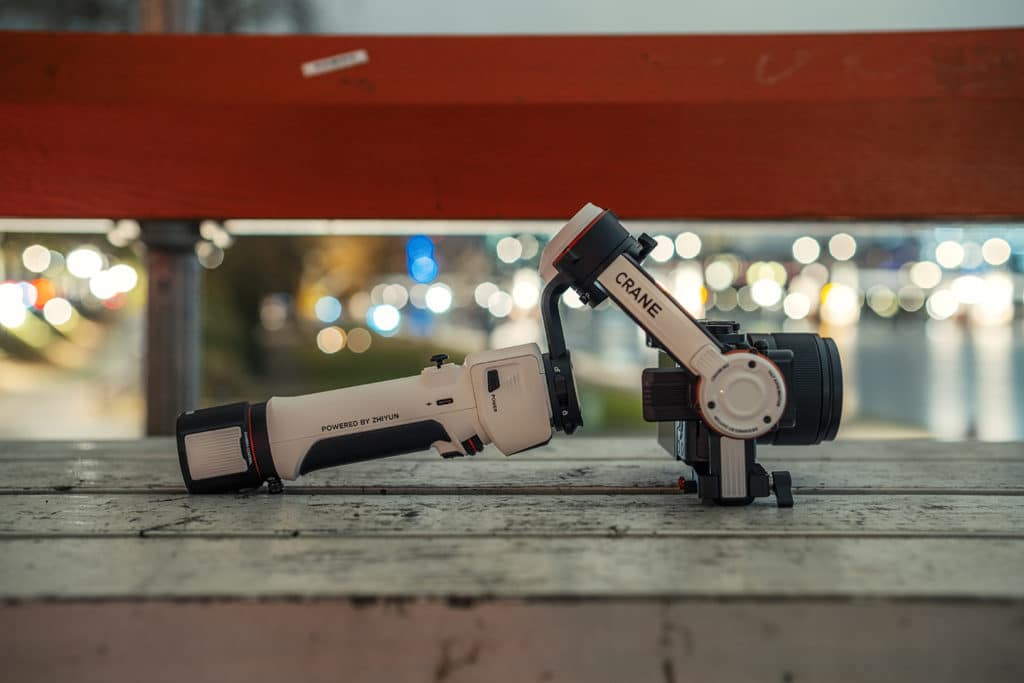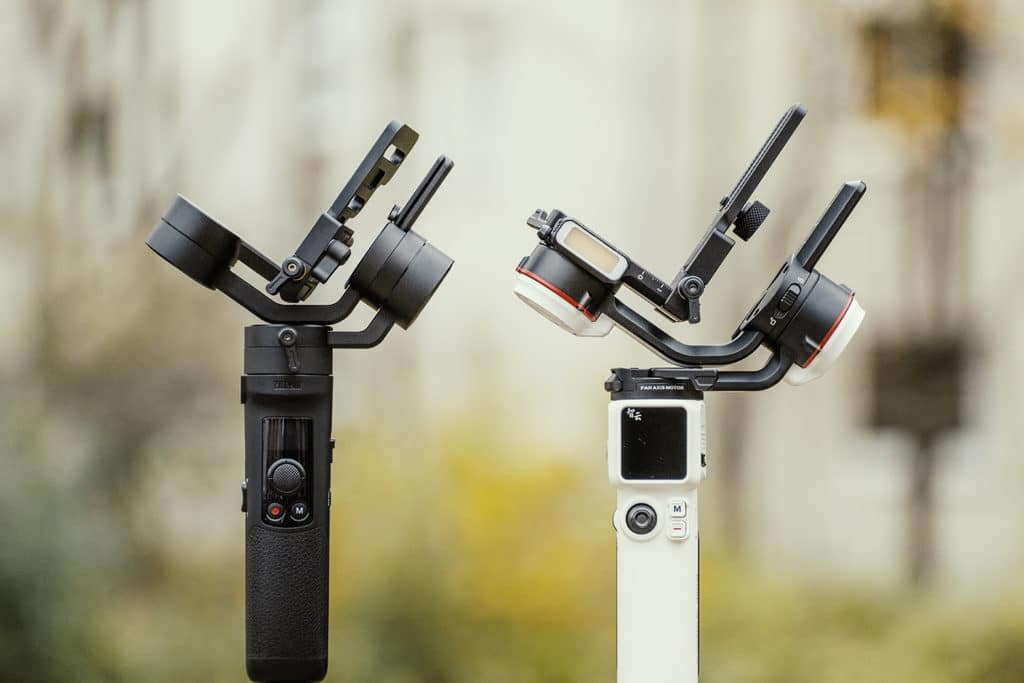The Zhiyun Crane M3 is the first in the M series to specifically support mirrorless cameras and not just point-and-shoots or other small cameras. This is rather unusual considering the compact form factor of the M3. While the manufacturer doesn’t specify the maximum payload, there’s a list of compatible camera and lens combinations. This also means that Zhiyun offers custom quick release plates to fit specific camera models.
Main features: Light and sound
Besides a new design and white colored look the stabilizer has two new main features.
The first one is the LED light that is built-in right next to the camera mount. On the left side of the grip is a dedicated light wheel. By long pressing the wheel the light turns on or off. By pressing the wheel quickly, the light changes between brightness and color temperature. The brightness of 800 lumen is impressive for such a small kit and not just useful for night shoots but also for most indoor shoots.
The Kelvin value goes from 2600K to 5400K. The kit also includes magnetic filters to additionally change the color of the light. While this feature is probably aimed at social media content creators this can be useful for walk-and-talk shots even when doing documentary or news work.
The second main feature worth mentioning is an additional accessory: An extension base that has a ¼” extension screw-in at the side, a placement for additional camera control and a 6.5mm microphone input. The microphone connection is a welcome feature since it often throws off the balance when connecting a cable or a wireless audio receiver directly to the camera. This way the microphone cable doesn’t interfere with the axis.

Controls and settings
The audio cable from the camera itself can be connected via a 3.5mm jack to the gimbal on the top without touching any axis. Below is a USB-C camera port to be able to control the camera settings directly with the gimbal, like recording, ISO, shutter speed or aperture. This can be done with the wheel on the back of the grip.
The menu screen is bright and the settings are easy to read. The mode can be changed in the menu by using the touch screen interface or simply by pressing the “M” button multiple times. By long pressing the “M” button the goes into sleep mode which means the stabilization is turned off.
When long pressing the black button on the back of the grip below the wheel, the gimbal switches to “Go” mode. When short pressing the same button twice the axis goes back into center position.

No inverted mode?
Holding the gimbal inverted was possible with the original Crane M which was released back in 2016 but not anymore with the M2. This technique allows to get low angle shots because the grip is tilted above the gimbal instead of below. The M3 can almost do it but not entirely which would have been a great addition. Maybe in the Crane-M4. We’ll see…
Mobile app
The ZY Play App can be connected via Bluetooth. It allows for basic control of the gimbal and also includes a mode in which it copies the motion the connected smartphone is doing. Timelapses can also be set up but a lot of features are still missing.
Battery life and charging
Charging the gimbal via USB-C takes around 2 hours when using a fast charger. The battery life lasts for 6-8 hours depending on the settings and of course if the light is being used or not. Considering the small size, the run time is pretty good and even if you’re on the go you could still charge the gimbal with a power bank.

Ergonomics and built quality
When it comes to the ergonomics and the built quality of the M3 the gimbal feels well-built even though the grip and control buttons are made from plastic. All axis can be locked which makes it much safer to walk around with the gimbal when it’s turned off to avoid any damage from the spinning axis.
Since the grip is very short, I highly recommend mounting the tripod as an additional grip below.
On the left side of the menu screen is a ¼” screw-in to mount accessories like a handle or a monitor.
Conclusion
While it’s possible to fit some small mirrorless cameras on the older Crane M2 it was always meant to be used with compact cameras.

The Zhiyun Crane M3 is certainly made for mirrorless camera but it’s not compatible with every setup due to the size and weight limit. The custom QR plates make it easy though to quickly mount a camera and also to remove it again. In the end it makes sense to check if the camera model you are using is supported or not.
But if you tend to shoot with very lightweight setups anyway or travel a lot, this gimbal is worth taking a closer look at.
Written by filmmaker Moritz Janisch on November 18, 2021